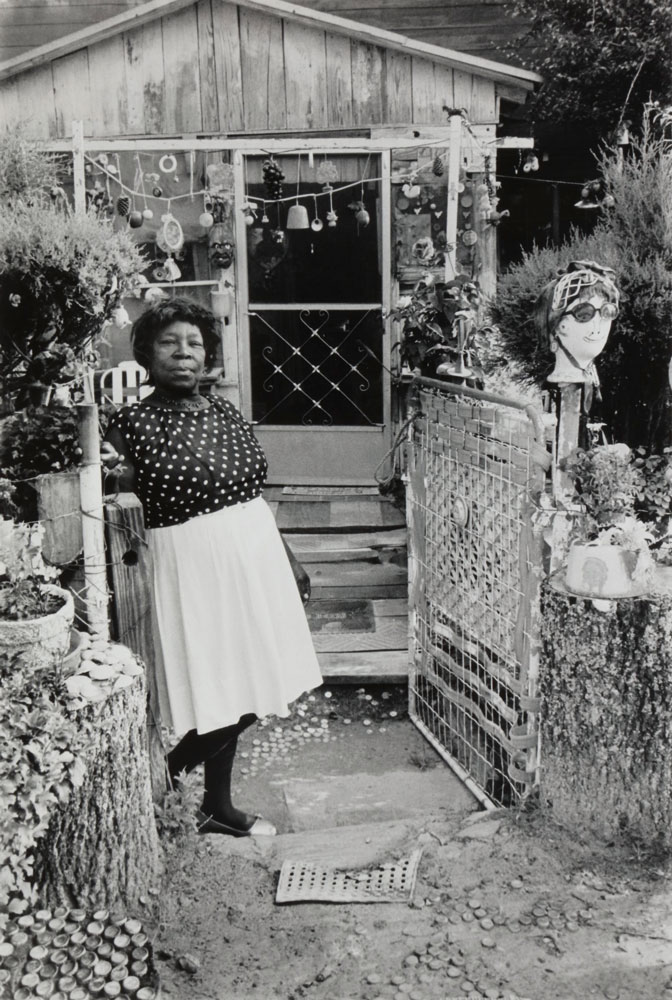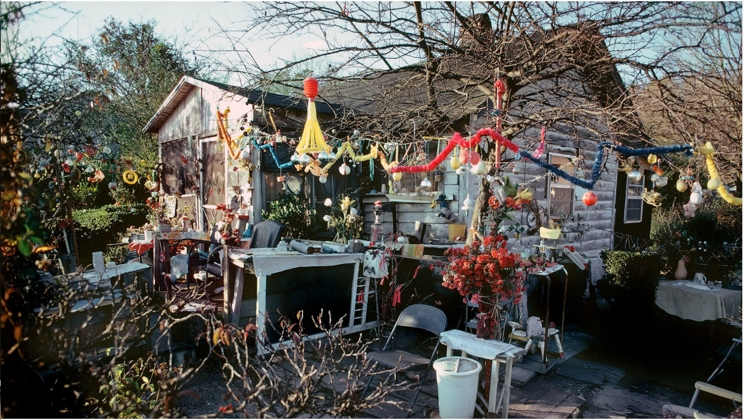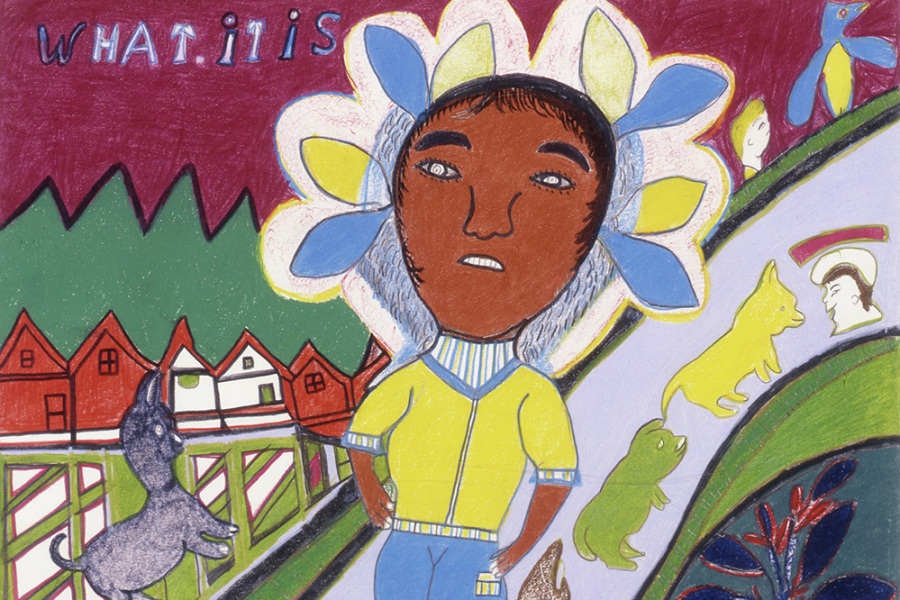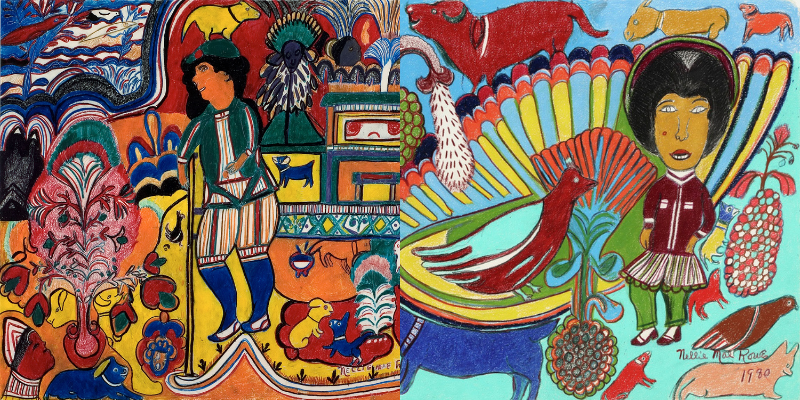4th July 2023. ON THIS DAY.
“I ain’t gone to school to learn no work like that. I guessed at it when I was a little gal, just lay down on the floor and draw. . . . I just had to get my pencil and draw something. That was in me and it’s still in me.”
-Nellie Mae Rowe
Nellie Mae Rowe, born on this day in Georgia in the late 19th century, was a self-taught artist who overcame adversity and oppression to create a joyful and colourful body of work. Born to a father who had once been enslaved and a mother born in the year of Emancipation, Rowe’s early life was shaped by segregation and poverty. Despite these challenges, she found solace in art, considering it a God-given means to express gratitude and reclaim the girlhood she lost to labour.

Courtesy: The Brooklyn Rail
Rowe’s art was a vibrant celebration of life, typically colourful, fanciful, and autobiographical, reflecting her deep religious faith. She transformed her home and yard into a realm she called her “Playhouse,” adorning it with artworks and found objects that brought a sense of animation and enrichment to her surroundings. In a society that rarely featured Black women in art and often depicted them through demeaning stereotypes, Rowe took control of the narrative. Her drawings and hand-coloured photographs depicted friends, neighbours, and herself with confidence, showcasing images of Black beauty and free-spirited joy. Through her art, she crafted a world of cultural pride, personal style, and unexpected delights.
Despite her immense talent, national recognition eluded Rowe until she was in her seventies. She married at a young age and worked as a domestic servant for much of her adult life. It was only after the death of her second husband in 1948 that Rowe transformed her three-room home into her “playhouse” and fully dedicated herself to her art. She displayed many of her creations in the yard, combining them with plants and miscellaneous objects, following in the footsteps of other African American artists who embraced outdoor installations.

Courtesy: Vinings Historic Preservation Society
Rowe did not consider herself a professional artist but was compelled to create. Her fascination with drawing began at an early age, and despite limited formal education, she nurtured her artistic instincts. She used a variety of materials, often blending them in collages and assemblages, but developed a particular affinity for coloured pencils. Her imagery drew from her own life experiences, dreams, and the natural world, frequently featuring animals, trees, and an empty chair following her cancer diagnosis. Rowe’s works were often accompanied by texts she wrote herself, adding an additional layer of meaning to her art.
Rowe’s career took a significant turn when she was included in an exhibition at the Atlanta History Center in 1976. This recognition marked a breakthrough, and she was subsequently befriended by Judith Alexander, a gallery owner who supported Rowe’s artistic endeavours. Alexander provided her with materials, boosted her enthusiasm, and donated a substantial number of Rowe’s pieces to the High Museum of Art. Following Rowe’s death in 1980, her work gained further prominence with exhibitions at the Studio Museum in Harlem and the American Folk Art Museum in New York.

Courtesy: Apollo Magazine
Nellie Mae Rowe’s life and art were a testament to resilience and creativity. Her journey from a laborious childhood and domestic work to becoming one of the first celebrated self-taught African American women artists inspired many. Her ability to find joy and positivity in her art, while reclaiming her own narrative, continues to resonate. Rowe’s vibrant and expressive works serve as a lasting legacy, reminding us of the power of art to transcend adversity and transform lives.
References
- The Johnson Collection- Nellie Mae Rowe
- National Museum of Women in the Arts
- Brooklyn Museum- Really Free: The Radical Art of Nellie Mae Rowe
- SAAM- Nellie Mae Rowe
Read More:





